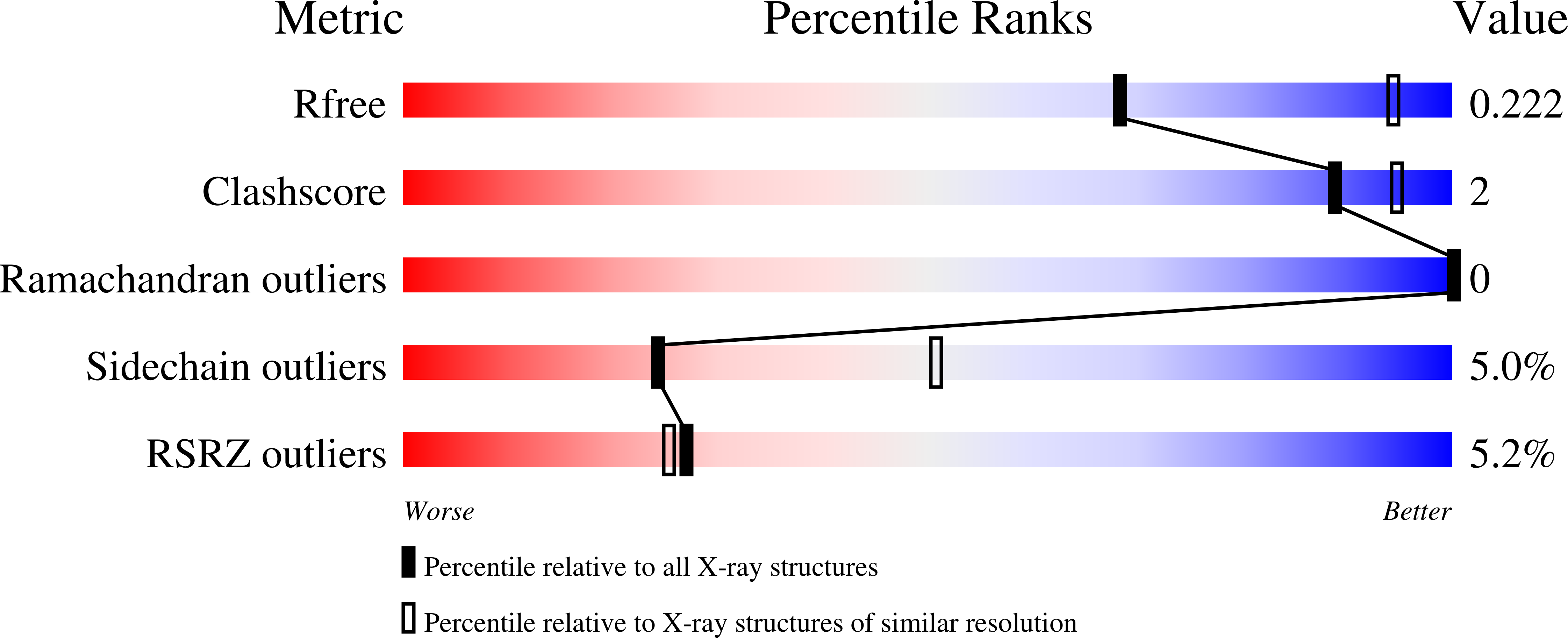Crystal structure of Drosophila melanogaster tryptophan 2,3-dioxygenase reveals insights into substrate recognition and catalytic mechanism.
Huang, W., Gong, Z., Li, J., Ding, J.(2013) J Struct Biol 181: 291-299
- PubMed: 23333332
- DOI: https://doi.org/10.1016/j.jsb.2013.01.002
- Primary Citation of Related Structures:
4HKA - PubMed Abstract:
Tryptophan 2,3-dioxygenase (TDO) catalyzes the oxidative cleavage of the indole ring of l-tryptophan to N-formylkynurenine in the kynurenine pathway, and is considered as a drug target for cancer immunotherapy. Here, we report the first crystal structure of a eukaryotic TDO from Drosophila melanogaster (DmTDO) in complex with heme at 2.7Å resolution. DmTDO consists of an N-terminal segment, a large domain and a small domain, and assumes a tetrameric architecture. Compared with prokaryotic TDOs, DmTDO contains two major insertion sequences: one forms part of the heme-binding site and the other forms a large portion of the small domain. The small domain which is unique to eukaryotic TDOs, interacts with the active site of an adjacent monomer and plays a role in the catalysis. Molecular modeling and dynamics simulation of DmTDO-heme-Trp suggest that like prokaryotic TDOs, DmTDO adopts an induced-fit mechanism to bind l-Trp; in particular, two conserved but flexible loops undergo conformational changes, converting the active site from an open conformation to a closed conformation. The functional roles of the key residues involved in recognition and binding of the heme and the substrate are verified by mutagenesis and kinetic studies. In addition, a modeling study of DmTDO in complex with the competitive inhibitor LM10 provides useful information for further inhibitor design. These findings reveal insights into the substrate recognition and the catalysis of DmTDO and possibly other eukaryotic TDOs and shed lights on the development of effective anti-TDO inhibitors.
Organizational Affiliation:
State Key Laboratory of Molecular Biology, Institute of Biochemistry and Cell Biology, Shanghai Institutes for Biological Sciences, Chinese Academy of Sciences, 320 Yue Yang Road, Shanghai 200031, China.















